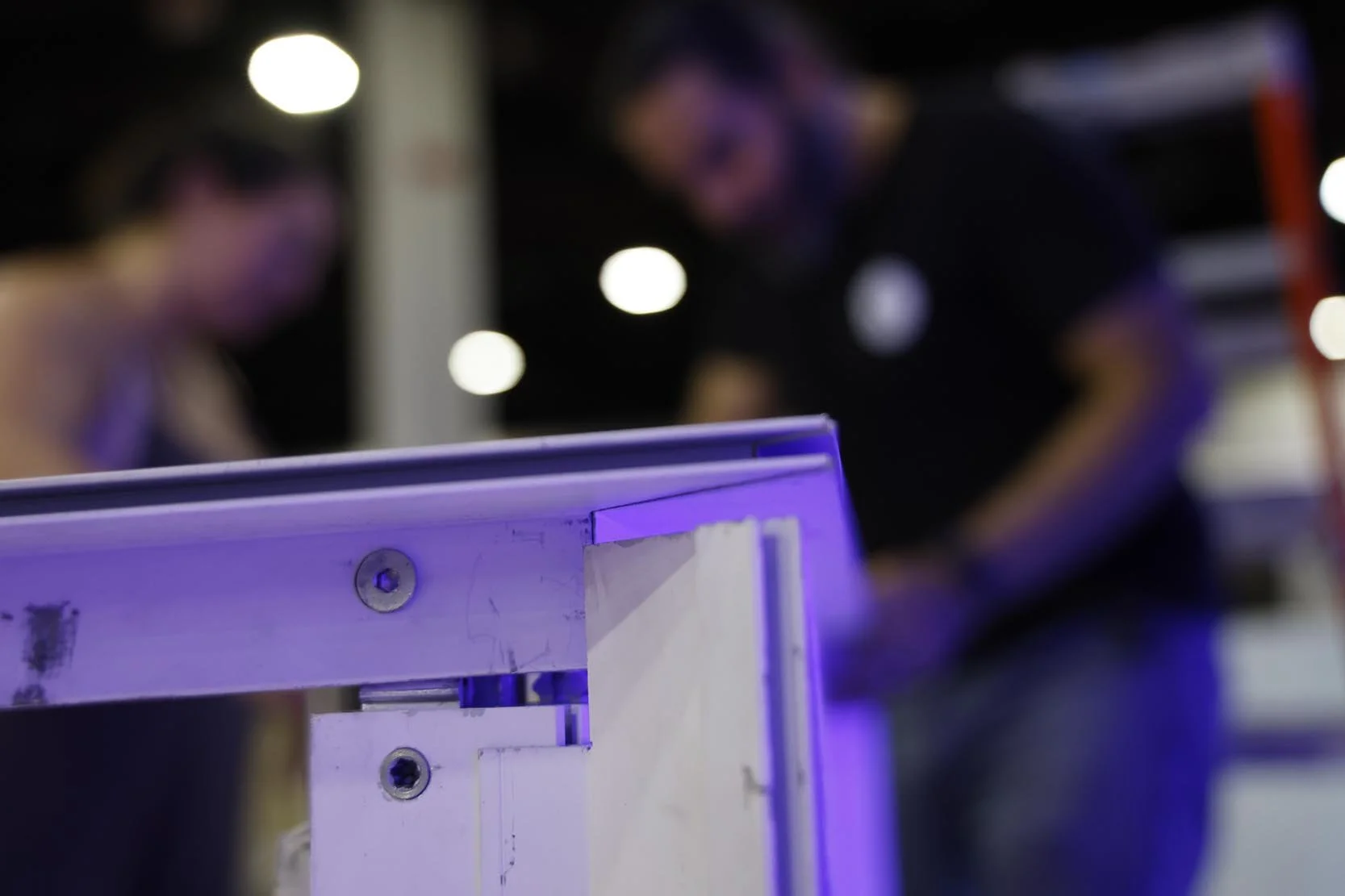The 7 Questions I Recommend Every Client Ask Before Buying a Trade Show Display
By Nicholas Fevelo, Axios NYC
When people shop for consumer goods, there are plenty of reputable reviews. For exhibits? There’s no neutral referee. Most buyers rely on what they’ve personally used or seen at a handful of shows, along with word of mouth from experienced industry insiders—which is always valuable. A quick search engine query before talking to an exhibit house—where you’ll compare designs, graphics, assembly, weight, and warranty. All good—but incomplete.
At AXIOS NYC, after a decade of building, installing, and maintaining exhibits, I’ve found that very few clients ask the questions that truly matter. Here are seven that can make or break your budget, your brand, your team’s workload, and your booth’s performance beyond the honeymoon phase.
Cheap becomes expensive when you’re repairing or quietly replacing components mid-campaign.
1. How will this exhibit look after 10 shows?
Exhibits are tools, not trophies. Most frames are aluminum extrusion, wood, or hybrids. Lower-grade materials look fine out of the crate but quickly distort, pit, and scuff after a few ship–show–ship cycles. By show three, your “new” trade show display may already look tired.
What you could ask for:
Real samples, not just renderings—touch the extrusion, check joinery, and inspect finishes.
References from clients who’ve run the system for a year.
Photos of the same model after multiple installs. Cheap becomes expensive when you’re repairing or quietly replacing components mid-campaign.
2. What’s the quality of the fabric?
Not all tension fabric is equal. You can feel the difference—weight, stretch recovery, opacity. Hardware lasts, but flimsy skins (thin knit, weak stitching, generic hook-and-loop, bargain zips) fail quickly—bagging out, snagging, or looking wavy under light.
What I look for:
Fabric spec sheets (gsm, knit type), seam construction, zipper brand, and rated lifecycle.
Proper edge finishing and reinforcement at stress points.
If it feels “disposable,” it will behave that way on tour.
3. Who’s doing the printing—and on what equipment?
Dye-sublimation is the standard, but press quality varies. HD dye-sub on a well-profiled press gives true blacks, smooth gradients, and believable skin tones. Aging machines or direct-to-fabric shortcuts produce dull, banded images that wear quickly.
What to verify:
Printer make, model, and year (not just “reconditioned”).
RIP/color management process and proofing workflow.
Fabric/ink pairing and washing/shipping durability.
For one-off use, direct print may be fine. For a season of shows, stick with true dye-sub.
4. Is the packaging engineered for reuse?
Most damage happens between shows, not on day one. Smart cases and crates save labor, reduce breakage, and cut waste.
What to see:
Interior bracing, foam density, labeled cavities, and cable/LED compartments.
Photos or a demo of pack-out and re-pack by non-experts.
Replaceable corner hardware and casters.
Better packaging also shrinks your landfill footprint—less shrink-wrap, single-use foam, and crushed cartons.
5. Are replacement parts actually available—and how fast?
If a connector fails during install, do you have a part number and a source, or are you “calling a guy who knows a guy”? Many bargain systems were never meant to be serviced.
Insist on:
A parts catalog with SKUs, pricing, and lead times.
Stock held domestically (or in-market if you tour internationally).
Compatibility across generations, so today’s frame accepts next year’s add-ons.
Serviceability is a strategy, not an afterthought.
6. What’s the plan for wire and power management?
Nothing tanks a premium build like a tangle of power strips and AV cords. Clean wire paths must be engineered into the structure—channels, grommets, raceways, and access panels installers can reach.
The non-negotiables are:
A marked plan showing device locations, wattage, and cable routes.
Concealment for lighting drivers, media players, and surge protection.
Field-serviceable access without dismantling half the booth.
Fixing cable chaos onsite costs ~10x more than planning it.
7. Who is designing this—exhibit and graphics—and what’s their trade show portfolio?
Exhibit design is a specialty. So is trade show graphic design. You want someone who designs a booth to be seen from the aisles and at a distance.
Ask for:
A portfolio spanning portable, modular, and custom—plus examples from your footprint (10×20, 20×20, island).
Evidence of collaboration between 3D and graphic teams.
A clear philosophy: fewer words, bigger images, layered messaging for scan → interest → demo.
Your trade show booth messaging should read from 40 feet, 15 feet, and 3 feet—by design.
Design for the Long Run
A booth should deliver more than first impressions—it should last through every ship–show–ship cycle while still looking fresh. At AXIOS NYC, we focus on the details that protect your investment: quality materials, engineered packaging, clean cable management, and design that works from 40 feet to 3 feet.
Connect with our team to explore how the right choices today set you up for years of successful shows.
Build Smarter Booths
Subscribe to the AXIOS NYC newsletter for insights on materials, design, and strategies that help exhibits perform beyond opening day. Get practical tips, industry trends, and behind-the-scenes expertise—straight to your inbox





